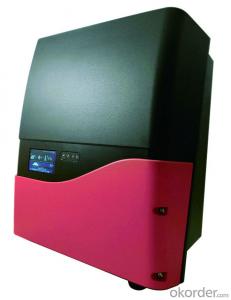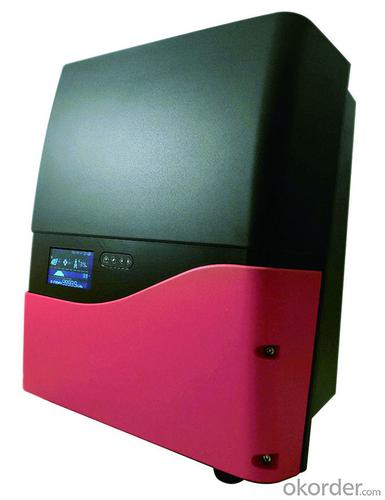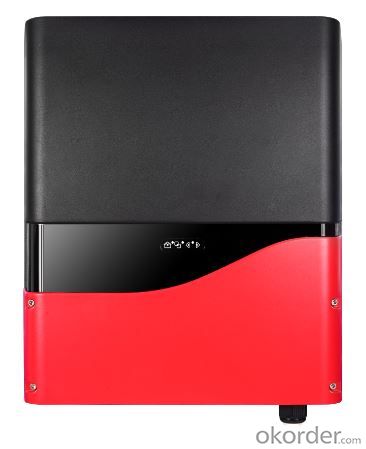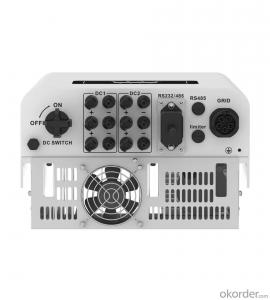Plug in Solar Inverter for Three Phase On-Grid PV-15000T-U
- Loading Port:
- China main port
- Payment Terms:
- TT OR LC
- Min Order Qty:
- 1 pc
- Supply Capability:
- 75000 pc/month
OKorder Service Pledge
Quality Product, Order Online Tracking, Timely Delivery
OKorder Financial Service
Credit Rating, Credit Services, Credit Purchasing
You Might Also Like
Specification
Output Power:
15,000W
Inveter Efficiency:
98.1(MAX)
Output Voltage(V):
380
Input Voltage(V):
500
Output Current(A):
24A(MAX)
Output Frequency:
50Hz
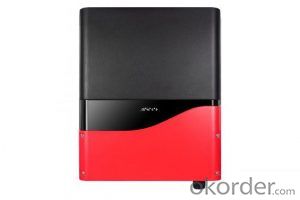
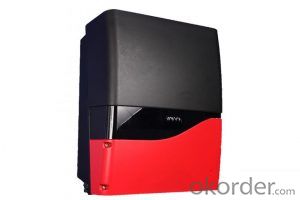
Features
VDE-AR-N 4105 & VDE 0126-1-1/A1 & PEA & MEA Certificate
Max & Euro Efficiency:98.3% / 98.1%
Durable & Light Weight Design
Integrated DC Switch, Data Logger, Web Server
RCR ( Ripple Control Receiver, German model )
Ethernet and Optional Wi-Fi
Die-Cast Enclosure
Cloud Web Portal
Optimized for 6” Solar Cell Module
Made In TAIWAN
Item Scale PV-15000T-U Input (DC) MPPT Working Range V 180~980 Max. Current A 20A/10A Max. Short Circuit Current (Isc) A 28A/14A MPP Tracker No. 2 Output (AC) Nominal Power W 15000 Nominal Voltage/ Frequency V 380V/50HZ Max. Current A 24 Efficiency Max. Efficiency % 98.1 General Protection IP65 Humidity % 0~100 Cooling Forced Air-cooling Features Display Icon Graphic Display(Optional) RS485 Standard, Half-duplex Wi-Fi Optional Data Logging Optional Mechanical Dimension(W x H x D) mm 418*485*190 Weight kg 27 Input Pairs 3 DC Switch Optional Certification & Regulation Grid Monitoring VDE 0126/-1-1/A1, VDE-AR-N 4105, AS/NZS 4777.2, AS/NZS 477.3, PEA,NB/T32004 Safety IEC 62109-1, IEC 62109-2 Remarks:
The range of output voltage and frequency may vary depending upon different grid codes.
Specifications are subject to change without advance notice.
- Q: What is the role of a maximum power control feature in a solar inverter?
- The role of a maximum power control feature in a solar inverter is to optimize the energy output of the solar panels by constantly tracking and adjusting the operating point to ensure that the system operates at its maximum power point (MPP). This feature helps to increase the overall efficiency of the solar system and maximize the amount of energy that can be harvested from the sun.
- Q: How do you calculate the power output of a solar inverter?
- The power output of a solar inverter can be calculated by multiplying the DC voltage input from the solar panels by the DC current output. This will give you the DC power output. To calculate the AC power output, you need to consider the efficiency of the inverter. Multiply the DC power output by the inverter efficiency to determine the AC power output.
- Q: Can a solar inverter be used with solar-powered security systems?
- Yes, a solar inverter can be used with solar-powered security systems. A solar inverter is responsible for converting the DC power generated by solar panels into AC power that can be used to power various electrical devices, including security systems. By using a solar inverter, solar-powered security systems can efficiently utilize the energy generated by solar panels to operate effectively.
- Q: How does MPPT improve the performance of a solar inverter?
- MPPT (Maximum Power Point Tracking) improves the performance of a solar inverter by optimizing the power generated from the solar panels. It continuously adjusts the operating voltage and current to ensure that the solar panels are operating at their maximum power point, which is the point where they generate the most power. This allows the solar inverter to convert the maximum amount of solar energy into usable electricity, resulting in increased efficiency and improved overall performance.
- Q: What is the maximum number of solar panels that a solar inverter can support?
- The maximum number of solar panels that a solar inverter can support depends on the specific model and capacity of the inverter. Different inverters have different power ratings and input capacities, which determine the number of solar panels they can handle. It is important to consult the manufacturer's specifications or consult with a professional to determine the appropriate number of panels that can be supported by a particular solar inverter.
- Q: Can a solar inverter be used in commercial applications?
- Yes, a solar inverter can be used in commercial applications. In fact, solar inverters are commonly used in commercial settings to convert the direct current (DC) produced by solar panels into alternating current (AC) that can be used to power various electrical devices and appliances. Commercial buildings often have larger solar systems installed, requiring more powerful inverters to efficiently convert the solar energy into usable electricity for the facility's commercial operations.
- Q: Can a solar inverter be used with solar-powered electric fences?
- Yes, a solar inverter can be used with solar-powered electric fences. Solar inverters are commonly used to convert the direct current (DC) energy generated by solar panels into alternating current (AC) energy, which is suitable for powering electric fences. By connecting the solar panels to a solar inverter, the generated solar energy can be efficiently utilized to power the electric fence system.
- Q: Can a solar inverter be used with a solar-powered vehicle?
- Yes, a solar inverter can be used with a solar-powered vehicle. The solar inverter is responsible for converting the DC power generated by the solar panels into AC power that can be used to power various devices and components in the vehicle, such as the motor, lights, and electronics.
- Q: What is the role of a solar inverter in fault ride-through capability?
- The role of a solar inverter in fault ride-through capability is to ensure that the solar power system remains connected to the grid during grid faults or disturbances. The inverter is responsible for detecting the fault and adjusting its operating parameters to ride through the fault without disconnecting from the grid. This capability helps maintain a stable and reliable power supply, as the solar inverter can continue to inject power into the grid even during temporary faults, reducing the impact on the overall system stability.
- Q: Are there any maintenance requirements for a solar inverter?
- Yes, solar inverters do have maintenance requirements. Regular cleaning of the solar inverter and its components is necessary to remove dust and debris. Additionally, checking for loose connections, inspecting for any physical damage, and ensuring proper ventilation are important maintenance tasks. It is also recommended to monitor the inverter's performance regularly and promptly address any issues or errors that may arise.
Send your message to us
Plug in Solar Inverter for Three Phase On-Grid PV-15000T-U
- Loading Port:
- China main port
- Payment Terms:
- TT OR LC
- Min Order Qty:
- 1 pc
- Supply Capability:
- 75000 pc/month
OKorder Service Pledge
Quality Product, Order Online Tracking, Timely Delivery
OKorder Financial Service
Credit Rating, Credit Services, Credit Purchasing
Similar products
Hot products
Hot Searches
Related keywords
